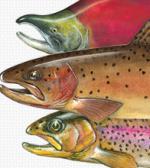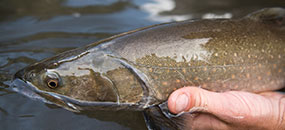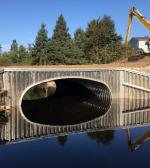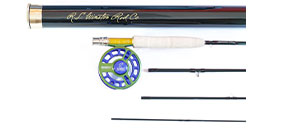(Photo by Matt Smythe)
By MARK HIERONYMUS
Sept. 23 marked the official end of summer and the beginning of fall, but in Southeast Alaska words like “summer” and “fall” are less about the calendar and more about the level of activity. While fall is the cooling off period, summers full of salmon bring with them cruise ships, hectic tour schedules, busy fishing charters and the constant movement of commercial fishermen from fishing areas to tenders and back. For me, last week marked the end of another season of guiding anglers, showing them the wonders of sport fishing in Southeast Alaska and the Tongass National Forest. With close to a million folks traveling through Juneau as both cruise passengers and independent travelers, this season was a busy one for me. By the end of the season I guided over 450 guests onto the bountiful streams of the Tongass and helped them catch thousands of humpies, chums, coho, and Dolly Varden.
Now that the hectic pace is quieting, but before we go into the long dark of winter, it is a good opportunity to pause and reflect upon the value of fisheries and tourism here in Southeast Alaska. I am thankful for the Tongass, a place that has given me a livelihood for the last 25 years and continues to provide so many opportunities for me and others to work, play and live while we fill our freezers, pantries and bank accounts with bounty from the land and the sea. All told, it is hard to overemphasize the importance of fisheries to our state and regional economy. Estimates from TCW Economics (Economic Contributions and Impacts of Salmonid Resources in Southeast Alaska, 2010) and the McDowell Group (Economic Impact of Visitors to Southeast Alaska 2010-11) put the total economic contributions of fisheries and tourism to our region in the neighborhood of $2 billion annually. Further, industries tied to fishing and tourism account for roughly 25 percent of Southeast Alaska jobs.
All of these jobs and economic contributions, however, depend upon healthy and intact watersheds, which include not just the waters but the trees and wetlands that make our rivers some of the greatest place on earth to sustain wild salmon and trout. As the U.S. Forest Service nears a comment period on its Tongass Land Management Plan, it is imperative that they understand the importance of tourism and fisheries programs to our regional economy and the potential impacts that development has on them. Limiting further habitat degradation is one of the keys to the continuation of the Southeast Alaska salmon success story, and watershed-scale conservation is a way to make sure we have salmon and trout for generations to come. Scientists and stakeholders in the region have identified over 70 areas within the Tongass National Forest that are the most important to salmon and trout populations.
The rivers and streams that make up these areas are currently open for development activities that could significantly impact salmon and trout habitat. Because they are so important to salmon and trout, groups like Trout Unlimited are working to conserve these key areas and solidify the economic gain they bring to the region with a proposal called the Tongass 77. Trout Unlimited is also working to convince Forest Service leaders that maintaining natural salmon habitat, traditional use and access, and the health and function of fish and wildlife habitat should be high priorities for managing and maintaining these watersheds. Tongass managers need to hear from others who appreciate and enjoy these places and the fish they produce and support. When the comment period for the TLMP opens up later this fall, be sure to let the Forest Service know that building and maintaining tourism infrastructure, restoring salmon streams and conserving the Tongass 77 are great ways the it can help keep the these industries strong and the Southeast Alaska salmon success story alive and well. • Mark Hieronymus is a fishing guide who lives in Juneau. In the off-season he works to conserve the Tongass National Forest with Trout Unlimited and the American Salmon Forest campaign. To learn more and comment on the TLMP, visit americansalmonforest.org.
This column originally appeared in the Juneau Empire on September 28, 2015







